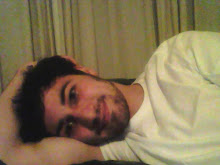Michael Haneke examines the social ills of another time in The White Ribbon, his negative worldview still strong but inflected with a slight humanism
Michael Haneke / Germany, Austria, France, Italy / 2009 / 144m
Set amongst a small community in the north of Germany during the year 1913 on the brink of World War I, The White Ribbon (ironically subtitled “A German Children's Story”) is much less concerned with shocking its audience than it is with painfully recreating a time and place in history for its characters to exist within. Sure, there are alarming instances of animal cruelty and child abuse, but it wouldn’t be a Haneke film without those nasty bits. Tame compared with his other films, Haneke structures his film around a string of wicked events happening to and by the villagers of this small community.
The film begins with voice-over narration; a man’s voice tells us that this is the best of what he can remember of the story and most of it is based on hearsay. In the first scene, the local doctor is injured when his horse stumbles over a trip wire intentionally set us across a field on two trees. The next horrific act, not seen on screen, is that of a farm worker’s wife falling through the Baron’s barn floor. The farm worker’s son decides to lay the blame on the Baron for his mother’s death and wrecks his employer’s cabbage crop. The son of the Baron and Baroness is then found badly beaten and tied upside down in the barn, thankfully still alive.
The White Ribbon might sound grim on paper, and it is a film filled with its share of malicious characters, but where Haneke’s period piece really shines is the depiction of youthful innocence and human kindness. A very young boy asking his nanny about death, and finding out his mother is actually dead and not on a long trip is a particularly poignant moment. The schoolteacher, who also acts as the narrator years after the events of the film, is the most pure character, with wholesome intentions to court coy but outspoken Eva, a nanny at the Baron’s estate.
By analyzing the power structure of the village, Haneke is working with familiar themes like oppression and the lower class versus the upper class. Haneke does not provide easy answers, as he said in his own words during the Q&A, he “refuses to give instructions on how to interpret his films.” A viewer of this film should not go in expecting Haneke to answer the film’s central mysteries, but allow him to take them to a time and place that seems eerily familiar to today’s society.
The film is shot in monochromatic black and white so it is easier for the viewer to interact with it and also so the feel of it fits the time period, when black and white photography reigned supreme. Christian Berger fills each image completely, rich in detail and utilizing the foreground, midground, and background entirely. The costume design by Moidele Bickel is meticulous and impressive, while there is no traditional score, just music that comes from within the set-up world of the film. The White Ribbon has a lived in quality, and sustains interest throughout its 144 minute running time – it is both sprawling, but tightly wound thanks to the editing by Monika Willi. It is quite an impressive feat for Michael Haneke, a true European auteur.


No comments:
Post a Comment